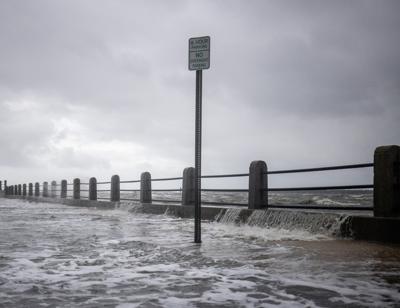The 2024 Atlantic hurricane season could be “extremely active,” cautioned researchers from Colorado State University.
They predict 23 named storms will form in the Atlantic during the 2024 season, with 11 of those developing into hurricanes, according to an initial forecast released April 4. They also predict a higher chance of a major hurricane making landfall on the East Coast.
The leading factors behind the forecast are warmer Atlantic waters and a developing La Niña phenomenon, both of which create conditions favorable to hurricane formation, the researchers reported.
Water temperatures in the eastern-central tropical and subtropical regions of the Atlantic Ocean already are much warmer than normal for the spring.
“We’re experiencing temperatures that we typically tend to see towards June or July already,” said Isaac Schluesche, a researcher working on the forecast. He noted these are the warmest temperatures on record for this time of year.
The warming will continue into hurricane season, which runs June 1-Nov. 30.
“A very warm Atlantic favors an above-average season, since a hurricane’s fuel source is warm ocean water,” the forecast press release stated.
Current El Niño conditions are expected to develop into La Niña conditions by peak hurricane season, August to October, according to the National Oceanic and Atmospheric Administration’s Climate Prediction Center.
Both El Niño and La Niña are naturally occurring climate patterns. El Niño is influenced by warmer Pacific waters and tends to lead to wet winters and increased flooding in the Southeast. La Niña is influenced by cooler Pacific waters and tends to lead to drought in the Southeast and encourage above-average hurricane activity.
Other climate factors that could contribute to a stormy Atlantic hurricane season include reduced Saharan dust outbreaks, which can quell hurricanes.
These characteristics are similar to those that defined the record-breaking 2020 hurricane season, which closed with 30 named storms, NOAA reported.
Colorado State University has issued forecasts for the Atlantic hurricane season since 1989. Professor Michael Bell and researchers Phil Klotzbach, Levi Silvers and Alex DesRosiers are writing this year’s forecast.
The prediction for 11 hurricanes is the highest ever issued in the university’s April forecast and is likely to change. The April forecast has the highest level of uncertainty, since major changes can occur before hurricane season starts to peak in August, the researchers emphasized.
The university will issue forecast updates on June 11, July 9 and Aug. 6. NOAA has not yet released its predictions for the 2024 hurricane season.










